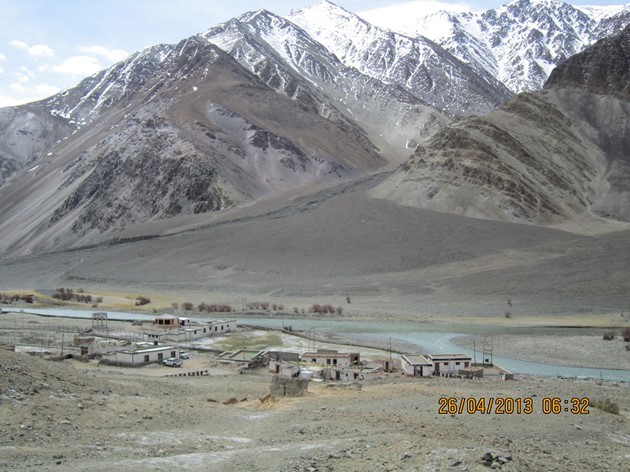Geothermal project successful in providing heat to community in the Himalaya
A geothermal heating project in Ladakh, India financed and developed through an India-Norway research cooperation program, successfully improved the livelihood of the local population providing geothermal heating.
With geothermal resources across seven provinces in India, there is – despite several projects – still no geothermal power plant in India. We reported earlier this month on the ambitious 10,000 MW development for geothermal energy goal by the government of India.
At the World Geothermal Congress early last year, a paper provided some insights into “an Indo-Norwegian project, with participants from Iceland, Norway and India, that aims to set up two pilot demonstration projects in the north-western Himalayas in India.” with a focus to “demonstrate the utilization of low and medium temperature resources for heating purposes”. The paper is titled “Pilot Project Study for Utilization of Geothermal Energy in North-Western Himalayas” and was written by Roger Olsson, Rajinder K. Bhasin, Árni Ragnarsson, Bjarni Richter, Bhoop Singh, Sukesh K Bartarya, Santosh K Rai and Gautam Rawat.
In a post on the website of the Norwegian Embassy in India, the project is described in a bit more detail.
The village Chumathang is located at an altitude of 4200 meters above sea level, in the North-Western Himalayas of Leh district in Jammu and Kashmir. During winter season, the temperature in the district drops below minus 20 degrees Celsius, causing severe hardships for the people residing in the area. Unavailability of natural resources like wood, and inaccessibility to electricity, adds to the problem.
The region is however blessed with a great potential for geothermal energy. Geothermal energy has been used for thousands of years in some countries for cooking and heating, and is simply power derived from the Earth’s internal heat. A number of hot water springs are present in the area, with a surface temperature close to the boiling point at that altitude. A trilateral research project between India, Norway and Iceland has recently explored how to utilize the potential for space heating.
The researchers conducted a detailed study of source potential and heat load for heating up a hotel and restaurant in the village, and designed a space heating application for demonstration. The installed heating system delivers enough heat to maintain a constant indoor temperature of 20 degrees. In the long term, this can improve the health and life expectancy of people residing in the area. Considering the constraint of lack of electricity, the researchers also installed solar panels, providing continuous energy supply to run the pumps.
The demonstration project is an important step towards utilization of geothermal energy in India. Through the geothermal heating system, the livelihood of those in the area will benefit significantly without depending on costly fossil fuels to provide heat. Apart from the usual hurdles all projects must overcome, this particular project had to bypass the very limited supply of electricity that the region suffers from; currently at a maximum of 3 hours per day. Despite all aforementioned issues, the project is now operational and successfully working.
The project was led by the Norwegian Geotechnical Institute (NGI) in Oslo in technical co-operation with Wadia Institute of Himalayan Geology in Dehradun and the Icelandic Geological Survey. The Natural Resource Data Management System (NRDMS) of the Department of Science and Technology (DST) coordinated the technical activities of the project and facilitated the import of all technical equipment.
The project is part of The Research Council of Norway’s INDNOR-programme. INDNOR, The Norwegian Programme for Research Cooperation with India, was established to promote collaboration on research and research funding between India and Norway. The geothermal energy demonstration project is also part of the Research Council’s ENERGIX-programme, providing funding for research on renewable energy, efficient use of energy, energy systems and energy policy.
Source: Norway Embassy in India, Project Paper published for WGC2015 (pdf)


















